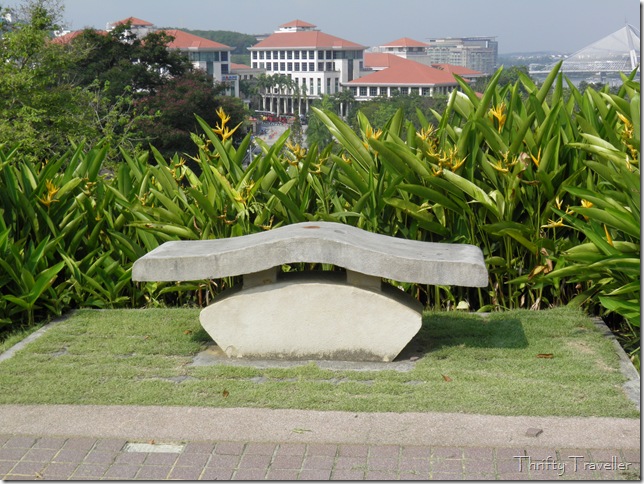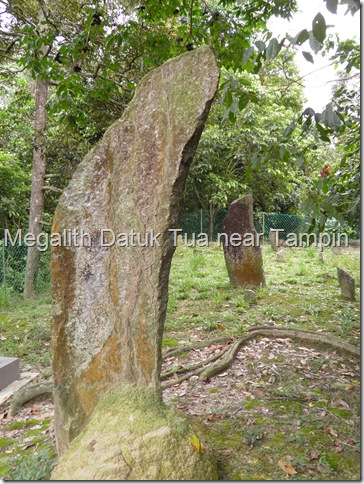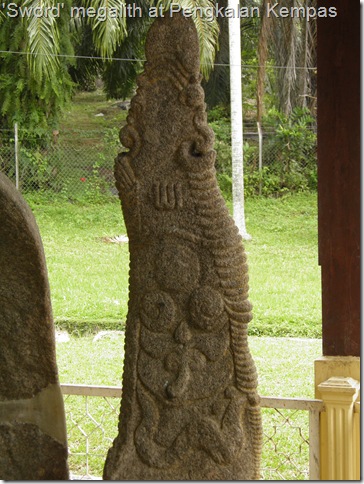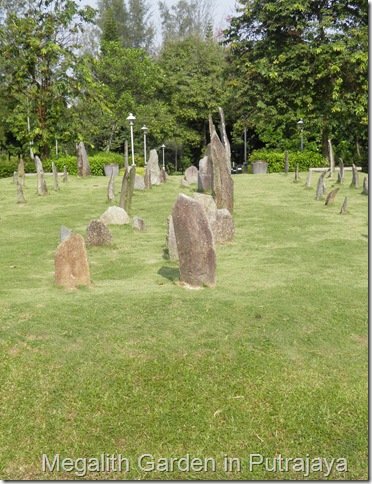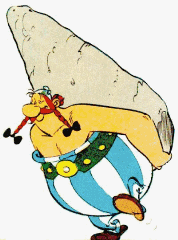Taman Putra Perdana is a park situated on a hill in Precinct 1 in the centre of Putrajaya. It is surrounded by a five lane circular highway, Persiaran Sultan Salahudin Abdul Aziz Shah, forming a giant roundabout enclosing the park, the Putrajaya Shangri-La Hotel and Istana Melawati (a royal palace).
Like most of Putrajaya’s parks, Taman Putra Perdana is sparsely visited except by the small army of gardeners and security guards who work there.
Its highest point is crowned with an abstract sculpture shaped like a tin hat called simply mercu tanda or ‘landmark’.
This park also has a collection of 86 megaliths as I mentioned in my last post.
In keeping with the megalith theme, the park benches have been cleverly designed with a hump back which helps the rain to drain off, prevents tramps from sleeping on them (not that there are any tramps in Putrajaya), and ensures that courting couples cannot snuggle up too close (Putrajaya is quite a conservative place!).
This female gardener doesn’t need a park bench. She has found a shady spot on the footpath for a brief nap to recharge her batteries after a tiring morning toiling in the tropical heat.
This security guard has found an effective way to protect his delicate skin from the blazing sun but perhaps someone should tell him that guards are not supposed to dress like the bad guys.
At certain times of the year the park’s trees burst into flower and some of them, like this member of the gardenia family, give off the most beautiful fragrance.
A brisk walk around Taman Putra Perdana is a pleasant way to begin the day.


